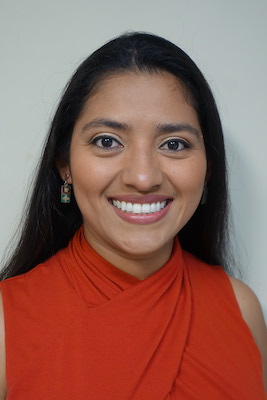Q: What was it that made you interested in psychology?
A: I was interested in behavioral issues… the way people feel about themselves and the way they relate to other people. I was curious about why people act the way they do, why behavior becomes an issue, how people can change their behavior if they want, why it is hard to change behavior, and why sometimes even when people go to a therapist they still have trouble changing or accomplishing the goals they set for themselves… All of that!
Q: Why should I send my child to a marriage and family therapist for therapy?
A: Many times people think of mental health symptoms as problems that exist solely within the individual. However, behavioral, emotional, or psychological concerns are not just individual problems. Mental health symptoms are impacted by relational struggles as well. The interactions children, teens, and young adults have with their family and friends affect their mental health. Marriage and family therapists are trained to look at personal struggles both as individual difficulties and as concerns that involve others. Instead of just asking, “What is wrong with you?,” marriage and family therapists ask, “What relationships are not working for you?”
As a marriage and family therapist, I provide different types of therapy depending on the child’s or family’s needs. I often provide individual therapy, where I spend most of the time with the child or teen and include parents/caregivers as needed. Other times I provide family therapy, where I work intensively with the entire family as a whole. Regardless of the type of therapy provided, children, teens, and young adults with mental health concerns like depression, anxiety, and ADHD can benefit from the added relational perspective I bring to the therapy room.
Q: When did your love for family therapy begin?
A: I completed my bachelor’s degree in psychology. I always wanted to practice some sort of psychology, and after I graduated from college I was really excited and wanted to get started right away! I found a master’s program in family therapy by serendipity. I just stumbled upon it, and that was it…
Q: Where can we find you when you’re not in the office?
A: Definitely at home with my kids and my husband, doing something with my family… Sometimes we like taking walks, and sometimes I ride my bicycle. I love doing that…
Q: What happens in your ongoing sessions with clients?
A: I create a relationship with the client. Sometimes therapy might only feel like a conversation. I will ask questions that I hope will help you think about things you want to work on. Sometimes, towards the middle of the session, even if you don’t want to talk, I’ll say, “Well, this is the time for you to talk…” and if it is challenging to talk, then we talk about why is it challenging to talk right now.
We definitely always talk about our objectives, our treatment goals, and we’re pretty much checking them every week. We review where we left off last session and link it to the objectives or treatment goals we are working on. We also review the areas the client is progressing on, as well as other areas that are still a challenge, and we revise the treatment goals and objectives when needed.
In individual therapy, I spend the first 10-15 minutes with parents and the child, and the remainder of the time alone with the child. Often times in individual therapy, I address a child’s school concerns, or their anxiety or depression, however I’m always thinking about that child’s relationships with family and others, even if the rest of the family isn’t present.
Teenagers sometimes have important things going on that they need to talk about that may not be part of their treatment plan. When this happens, I take the client’s lead so their pressing concerns can be addressed.
When I provide family therapy, sometimes I have a few sessions solely with parents, a few sessions with both parents and children, and other times sessions with just the children. Other times, I’ll split up a session and meet with different members of the family for different parts of the session.
If the primary concern is that a child is not listening, the parents are not on the same page, the family is going through a life transition (such as a child starting school for the first time, or a teenager going off to college), or family members are experiencing grief due to loss of a loved one, I usually recommend family therapy so we can focus more on relational issues. In family therapy, I often address how parents communicate with their children, whether they have a healthy parental structure, and how they can develop consistency with their messaging to their children.
Q: What are one or two things you have learned about people or about life through your work as a therapist?
A: I think people are trying the best with the resources they have even though they know that there are things that need to change. If you think about where people are coming from and consider their environment and social contexts, then their challenges make sense. People are trying their best even when they are struggling.
There’s no change without you having to go through pain or feeling uncomfortable… That’s where change happens. I have learned by working with people that it’s challenging, it’s painful, but once you get to the other side, you feel lighter and yet stronger!
Q: What do you find most rewarding about your work?
A: Developing a connection with my clients is very rewarding for me… [It’s also very rewarding] when people acknowledge that because they are doing therapy, change has happened, and the therapy has allowed them to change or grow.
Q: What do you look forward to when you start your work day?
A: Learning more about my clients’ lives… Because you know you could have left a session with something, but within a week so many things could have happened… [I enjoy] the anticipation of what went on this week. “Tell me about that… Mm-hmm…”
Q: What are some of your favorite books that you recommend to clients?
A: For me, it’s important when parents are on the same page, because teenagers pick up on their parents’ relationship challenges and their parents’ own internal struggles. For this reason, I’d recommend, Bring Yourself to Love: How Couples Can Turn Disconnection Into Intimacy by Mona Barbera. It’s a book about Internal Family Systems Therapy for couples. I also like children’s books… Do you know what book I love? Every time I read it I almost cry… it’s Shel Silverstein’s, The Giving Tree. I also like [the children’s book] Stick and Stones.
Q: If you couldn’t practice therapy, what would you do instead?
A: Be a full-time mommy.
Q: Everyone needs self-care. How do you practice self-care?
A: I like listening to music. Riding my bike when I make the time. I like spending quality time with my children and my husband.
Q: What makes you unique as a therapist?
A: The connection I get to establish with people. I put my heart into my clients and it’s kind of like we both are learning about each other, although of course they don’t learn much about me but they get that sense of connection… and it’s within that that people get to be themselves without having to feel overly conscious about what am I going to say… without thinking, “Is she going to like it or not?”
Q: What advice or suggestions would you give students who are considering becoming marriage and and family therapists themselves?
A: Identify what are your trailheads. And by that I mean: What are the intergenerational patterns that are enmeshed in your family, that your family has given to you and that you have taken? I would say you have to start being mindful about your family and those things that you don’t like about your father or your mother, how you’re dealing with them, and how you would like to learn more about relationships.
Q: What thought or idea inspires you to reach your fullest potential in life?
A: For me, I’ve been noticing lately that every time I listen to music, especially songs that I like, it kind of sparks something in me that gets me moving! It’s not exactly a thought, [but more like] inspiration… It’s just a feeling I get. Going back to that book by Shel Silverstein, every time I read it, I think, “I need to take less, and appreciate what I have,” and this comes in the form of a feeling. Then I notice myself being more gentle with my mother. Or when I read Stick and Stones, I feel we need to be more gentle with our friends and we need to reach out. So it’s not exactly a phrase I tell myself, but sometimes there are certain things, whether it’s music or reading a book, that will trigger a feeling in me that will make me more conscious about the changes I need to make that day.
At Intuition Wellness Center, we specialize in health and wellness services for children, young adults, and their families. If you think you would like some extra support, we’re here for you.



1 thought on “Get to Know Nadia Zanger, LMFT”
Hello, do you do PICT? I’m interested in working with you either way. I have 3 children and 1 has ADHD and probably one of the younger twins too. Thanks